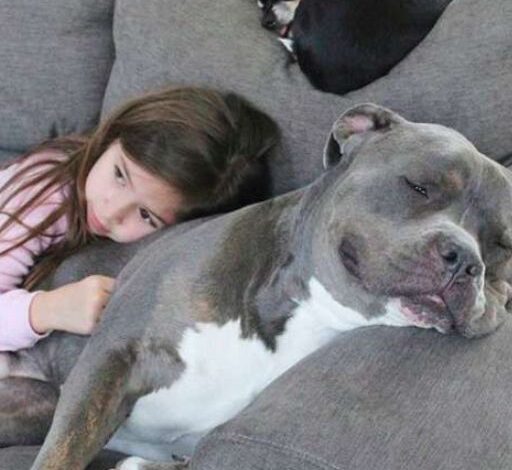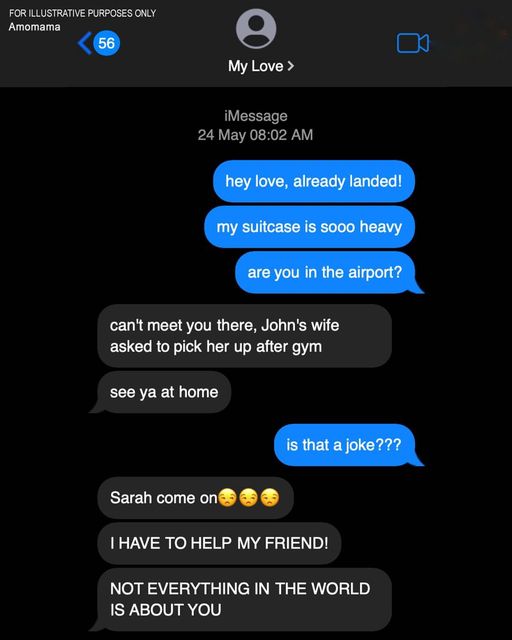When I first saw Tank, he didn’t look like a monster. He looked like an animal who’d given up on being understood.
He was a huge pit mix — all muscle and scars, the kind of dog people cross the street to avoid. The shelter had labeled him “unadoptable.” Too strong. Too unpredictable. Too intimidating. But I saw something different. When a staff member raised their voice, he flinched, pressed himself to the floor, and looked away. And when my daughter, Leila, peeked through the kennel bars, he didn’t bark or growl — he just sat down, quietly, as if waiting for her to make the first move.
We brought him home six months after the divorce. I was still learning how to hold our little world together. Leila was five, full of questions I didn’t know how to answer and fears I didn’t know how to fix.
She hadn’t slept through a single night since her father left. Nightmares, crying fits, the kind of sobbing that twists your insides. Therapists tried. I tried. Nothing helped.
Then one night, I found her curled up next to Tank on the couch. His massive body was sprawled across the cushions like an old bear. Her tiny hand rested on his paw. “Don’t worry,” she whispered to him. “I get nightmares too.”
He didn’t move. He just let her be.
That night, she slept until morning.
After that, she called him her “Dream Bouncer.” She said when Tank was near, the bad dreams couldn’t sneak in. And for the first time in months, our apartment was quiet at night.
But peace doesn’t last long when people don’t understand what they see.
A few weeks later, I got a letter from building management. Someone had complained — said there was a “dangerous dog” in the complex and that their child was terrified. The letter gave me a choice: remove the animal or face eviction.
I looked over at Tank, lying beside Leila as she drew pictures of him chasing away “monsters.” Her small hand rested on his back, his tail thumping gently in his sleep.
I wasn’t giving him up. Not this time.
The next morning, I started making calls — anyone who might know something about tenant rights, pet policies, or emotional support exemptions. A woman named Marcy, who ran a local shelter, told me to fight back. “Start a petition,” she said. “If your neighbors support you, management will have a harder time pushing you out.”
So I did.
Clipboard in hand, I started knocking on doors. Some people were skeptical — they’d seen Tank’s size, heard the rumors. But others smiled knowingly. Mrs. Patel from the third floor told me how Tank had nudged her grocery bag back toward her when it fell — without even stepping on an egg. Mr. Alvarez, the retired bus driver, mentioned how Leila and Tank made his mornings brighter when he saw them walking together.
By evening, I had nearly half the building’s signatures.
Still, the fear lingered. The following week, management sent another letter — this time with a deadline: remove the dog within seven days or vacate the apartment.
When I read it aloud, Leila’s face crumpled. “No one can take Tank,” she cried. “He’s family.”
I held her close, trying to steady my voice. “We’re not giving up, sweetheart. I promise.”
That night, Tank did something strange. Around midnight, he stood up and paced to the door, ears alert. A moment later, there was a knock.
It was Greg, a quiet man from two floors down. He handed me a stack of papers. “Thought you might need these,” he said, awkwardly.
Inside were handwritten notes — from parents, seniors, and even the maintenance guy — all vouching for Tank’s behavior. He’s gentle. He’s friendly. He’s part of this community.
I didn’t know whether to laugh or cry. For the first time, I felt like we had a fighting chance.
On the sixth day, I marched into the management office armed with every piece of evidence I had — the petition, the testimonials, photos of Tank playing with children, even a note from Leila’s therapist explaining how he’d helped with her anxiety and trauma.
Ms. Harper, the property manager, looked over the documents, expression unreadable. “I understand your situation,” she said finally, “but rules are rules.”
I met her gaze. “Rules are meant to protect people. Tank is protecting someone — my daughter. He’s saving her.”
Her face softened slightly. “What happens if we get another complaint?”
“Then you call me,” I said. “And I’ll deal with it.”
She paused, thinking. Then she sighed. “Fine. You’ve got thirty days to prove this works. After that, we’ll review it.”
Relief hit me like a wave. Thirty days wasn’t forever — but it was enough.
During that month, something remarkable happened. The building started changing.
Neighbors who’d once avoided us began stopping by. Kids would knock on the door just to pet Tank, giggling as he rolled onto his back. Someone started leaving treats at our doorstep. Even Ms. Harper dropped by one afternoon during a surprise inspection — only to end up sitting on the floor, scratching behind Tank’s ears while he wagged his tail.
Leila glowed in those weeks. She slept soundly, laughed more, and even made friends at school. One evening, she came home holding a crayon drawing: Tank wearing a superhero cape. “My teacher says he should get a medal,” she said proudly. “For keeping the nightmares away.”
By the time the final review meeting arrived, I wasn’t nervous. I had a folder thick with support letters, new photos, and stories from residents who’d come to love our gentle giant.
When Ms. Harper asked if anyone objected to Tank staying, the room stayed silent.
She nodded. “Then I think we can consider this matter resolved.”
Leila cheered. Tank wagged his tail like he understood every word.
Months later, the three of us found our rhythm. Tank became the unofficial mascot of the complex — a gentle giant everyone trusted. Someone even painted a mural of him on the side of a local café, beneath the words: Dream Bouncer Extraordinaire.
Leila still sleeps through the night, her small hand always resting on his fur. Her nightmares are gone. Her laughter, though — that’s here to stay.
One evening, as the sun dipped below the horizon, she looked up at me and said, “Mommy, remember when they wanted to take Tank away?”
“I remember,” I said.
“He showed them,” she said, smiling. “Sometimes the scariest-looking ones are really the best protectors.”
And she was right.
Tank wasn’t just a rescue — he was redemption in fur and muscle. Proof that broken things can still heal, that misunderstood souls can still find purpose.
People said I saved him. But the truth? He saved us both.
So here’s to the ones labeled “unadoptable.” The ones the world misjudges. The ones who wait quietly, hoping someone will look past the fear and see the heart underneath.
Because sometimes, the fiercest love comes from the gentlest giant. And sometimes, the reason your child finally sleeps through the night is the very soul everyone else told you to give up on.




